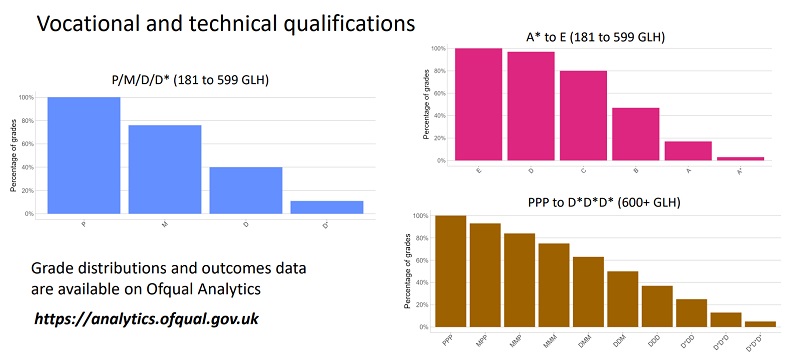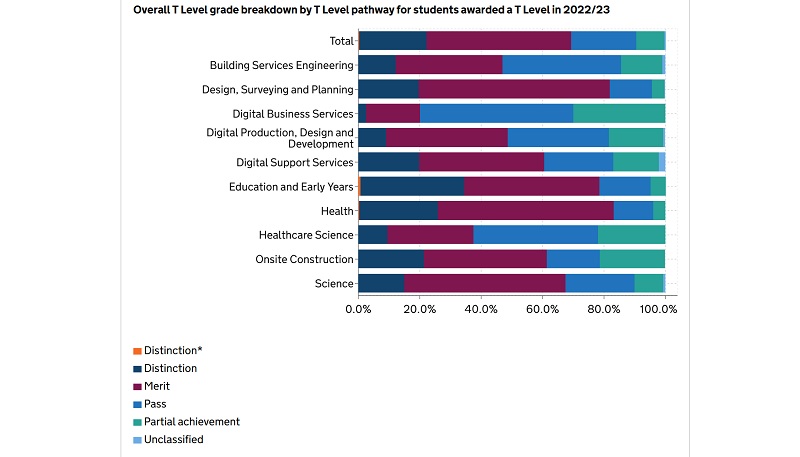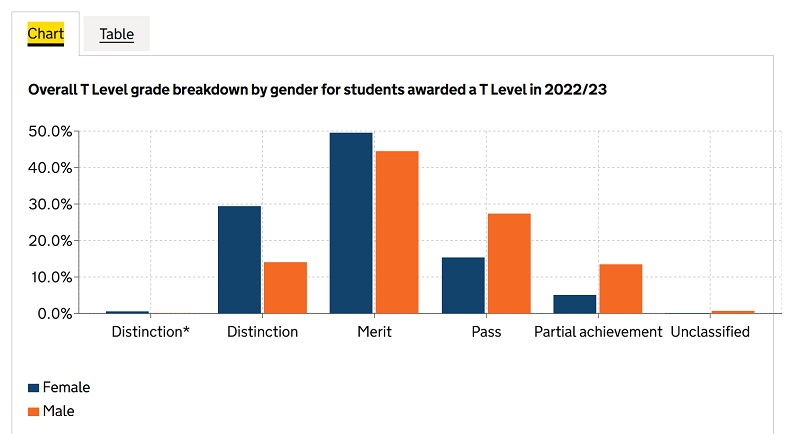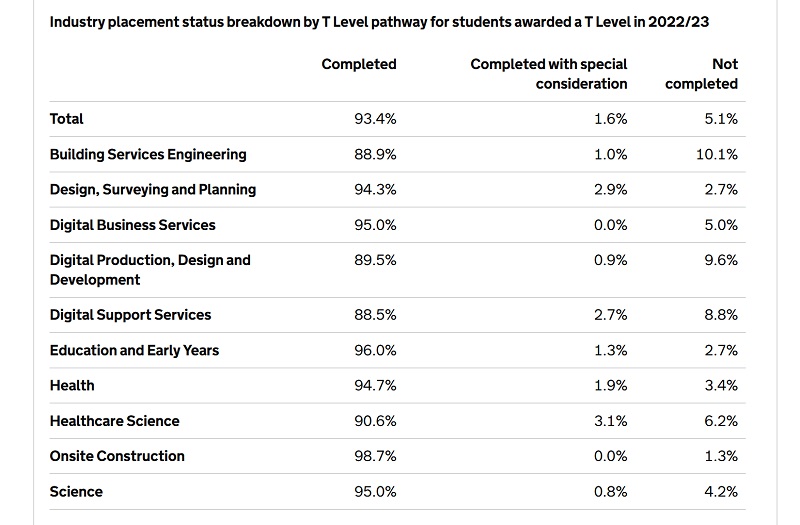Results for students taking vocational and technical qualifications (VTQ) as well as T Levels are out today – here’s FE Week’s round up of the key trends.
1. ‘No surprises’ as 378k VTQ results handed out
Last year’s results day was mired by the delay of tens of thousands of BTEC and other VTQ grades, which prompted exams regulator Ofqual to launch an action plan which imposed a series of new strict deadlines on schools, colleges and awarding bodies to ensure the problem was not repeated.
Those efforts appear to have worked as Ofqual data shows over 378,000 results across 575 VTQs have been issued and chief regulator Jo Saxton has stated that there are no unexpected late results.
Under 180 results have been “routinely withheld” pending the outcome of internal processing due to, for example, malpractice or late special consideration requests, which “happens in any year”, according to Ofqual.
And in line with students’ plans changing or because they need more time to complete their qualification, there are nearly 30,000 results where awarding organisations and schools or colleges have agreed to defer the result or have it withdrawn.
Saxton said Ofqual is committed to taking a similar approach next year, continuing with a “term-time checkpoint and a clear deadline for awarding organisations to issue results”.
2. Top grades for 9% of VTQs in performance tables
Of the 378,000 total VTQ results, 255,000 are for applied generals, like BTECs, or tech levels included in the government’s performance league tables.
Today’s data shows 9 per cent – 23,500 – of those achieved top grades of either A* or distinction* depending on the grading scale their qualification uses.
The three performance table subjects with the most certificates issued against them are business, administration and law – 61,200, health, public services and care – 36,900, and social sciences – 36,500.

3. 90.5% pass rate for T Levels – but a third drop out
A total of 3,448 students received T Level results today, a third lower than the 5,210 the government reported had started the two-year course in 2021.
Of those picking up results, 22.2 per cent of students achieved the top distinction and distinction* grades. Nearly half, 47.1 per cent, achieved a merit and 21.2 per cent scored a pass.
A Department for Education spokesperson said the government will “work with providers and other partners to understand more about the reasons for students dropping out and what can be done to improve retention” (click here for full story).
4. Digital hardest T Level to pass
There were 10 T Levels available for those starting in 2021 across four routes.
DfE data shows that health had the highest percentage of students achieving pass or above (96 per cent) whilst those on digital business services had the lowest (70 per cent).
The T Level pathway in which the highest percentage of students achieved a distinction or above was education and early years (34.5 per cent), whilst digital business services again had the lowest (2.5 per cent).

5. Females outperform males
Of the 3,448 students picking up T Level results today, 1,775 are female and 1,650 are male.
The overall pass rate was higher for females (94.9 per cent) than males (85.8 per cent).
More females also achieved distinction or above than males (29.9 per cent compared with 14.1 per cent).

6. Few females choose construction and engineering
A big gender divide has developed for some T Levels, namely construction and engineering, digital and education and childcare.
The data shows there was just one female student on the onsite construction pathway compared to 74 males, and only three females were on the building services engineering pathway compared to 204 males.
Similarly, just eight females were on the digital support services pathway compared to 174 males, and only 65 females took the digital production, design and development T Level compared to 612 males.
Meanwhile education and early years had just 47 males compared to 938 females. There were also 614 females on the health pathway compared to 58 males.
7. 175 students didn’t complete their industry placement
Students are required to complete a placement lasting at least 315 hours (approximately 45 days) to achieve a T Level.
Today’s data shows that 3,219 (93.4 per cent) T Level students completed their placement in full, 54 (1.6 per cent) completed it with a “special consideration”, and 175 (5.1 per cent) failed to complete a placement.
A special consideration is available where a student has experienced adverse circumstances and has not been able to complete the minimum placement hours but has demonstrated “sufficient progress” towards their learning goals and worked directly to an external employer.
There were small differences in the proportions completing the industry placement between T Level pathways. The highest proportion of students completing, including those completing with special consideration, was in onsite construction (98.7 per cent) and the lowest was in building services engineering (89.9 per cent).
Digital placements were among the pathways with consistently high non-completion rates.


















Your thoughts